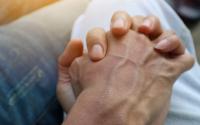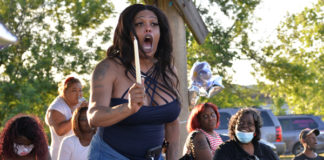
The European Centre for Disease Prevention and Control (ECDC) published its first update to its rapid risk assessment of monkeypox, saying that the likelihood of disease spread in people with multiple sexual partners in Europe is high, but the risk to the broader population is very low.
“The overall risk is therefore assessed as moderate for people having multiple sexual partners (including some groups of MSM [men who have sex with men]) and low for the broader population. The risk of establishment of an enzootic cycle and spill-over events to humans is considered to be low,” the ECDC said.
The outbreak in Europe is still mostly contained to MSM, and several parties, bath houses, saunas, and other mass-gathering sites have been implicated in transmission events.
Cases globally have reached 8,127, with the vast majority reported in nonendemic European countries, including Spain, Germany, and the United Kingdom.
Local disease spread in Berlin, Madrid
In Germany, the outbreak is focused in Berlin among MSM. In Eurosurveillance, authors show how the outbreak grew from two travel-related cases in May to local ongoing transmission.
“Two thirds of cases in Germany reported Berlin as the likely place of infection. Berlin has one of the largest MSM populations in Germany and is a major international hotspot of the MSM community for visiting gay clubs, parties, and sex-on-premises locations,” the authors write.
A similar dynamic was seen in Madrid, which has tracked more than 500 cases since May.
“At the beginning of the outbreak, a high percentage of cases attended at the same sauna in the city of Madrid (34 of the 56 cases reporting sauna use), and the public health authorities proceeded to close down the sauna as a precautionary measure,” the authors write.
“This type of sauna can be a place of exposure to condomless sex with multiple unknown partners. In addition, 73 cases attended large events and parties, including the Maspalomas Gay Pride festival in Gran Canaria in May.”
US cases hit 700 as more vaccines distributed
The Centers for Disease Control and Prevention lists 700 US monkeypox cases, an increase of 95 since yesterday.
Yesterday, the Department of Health and Human Services (HHS) said the federal administration will make 144,000 doses of the Jynneos vaccine available to states beginning Jul 11.
“We are using every tool we have to increase and accelerate JYNNEOS vaccine availability in jurisdictions that need them the most,” said Steve Adams, Director of the Strategic National Stockpile in a press release. “In less than ten days, we’ve made available 200,000 JYNNEOS vaccine doses in communities where transmission has been the highest and with high-risk populations, and significantly scaled testing availability and convenience.”
ASPR (Office of the Assistant Secretary for Preparedness and Response) has posted data on how the US government is distributing Jynneos monkeypox vaccines, which it will update every Wednesday. So far, California, New York City, and Chicago are getting the most doses.
Despite having a greater supply than other cities, New Yorkers have grown frustrated with vaccine availability in their city. Glitches on a health department website, vaccine slots that fill in minutes, and 600 missing appointments have colored the first days of the city’s vaccine rollout, as documented in the New York Times.
First month of US testing reveals 395 cases
Finally, today in Morbidity and Mortality Weekly Report, authors describe the first month of monkeypox testing in the United States.
The Laboratory Response Network (LRN) includes US laboratories validated to perform the non-variola orthopoxvirus (NVO) assay. From May 17 to Jun 30, LRN laboratories tested 2,009 specimens for suspected monkeypox, with 730 (36%) specimens from 395 patients showing positives.
At the end of last month, the Biden administration expanded testing to five commercial labs, which will greatly enhance the ability to test more people for the virus, the authors said. They also noted that providers should do their best to obtain two samples from lesions per patient.







